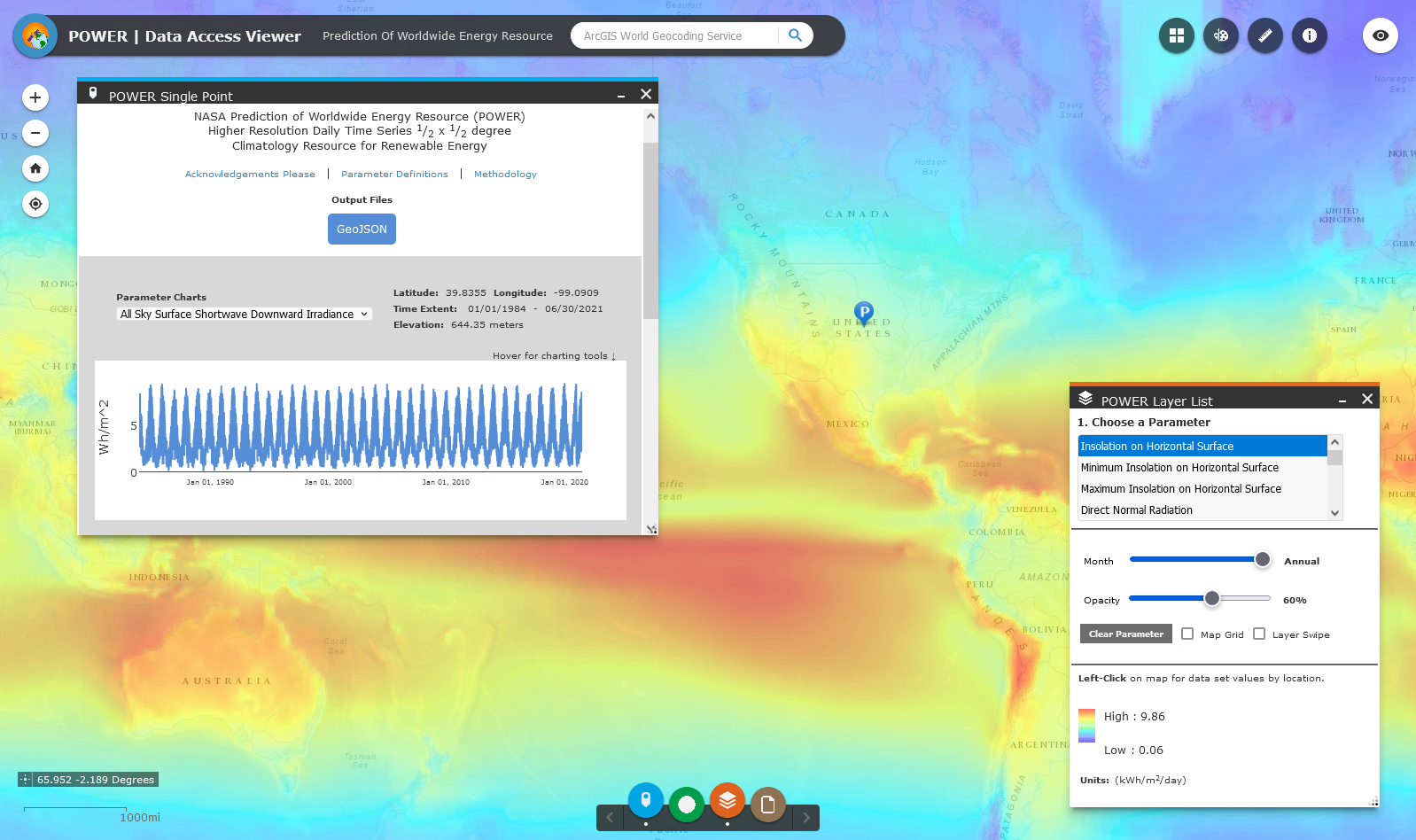A NASA program that gives users access to energy observations collected by Earth-observing satellites has rolled out a new, improved version.
The NASA Prediction Of Worldwide Energy Resources (POWER) Project improves the accessibility and usage of NASA Earth Observations (EO) supporting community research in three focus areas:
- Renewable energy development
- Building energy efficiency
- Agroclimatology applications
The latest POWER version enhances its distribution systems to provide the latest NASA EO source data, be more resilient, support users more effectively, and provide data more efficiently. The update will include hourly-based source Analysis Ready Data (ARD), in addition to enhanced daily, monthly, annual, and climatology ARD. The daily time-series now spans 40 years for meteorology available from 1981 and solar-based parameters start in 1984. The hourly source data are from Clouds and the Earth’s Radiant Energy System (CERES) and Global Modeling and Assimilation Office (GMAO), spanning 20 years from 2001.
“We’re really excited to offer this new version to our users featuring access to hourly data parameters. In combination with the already available data products, we believe this new data, as well as an enhanced data access experience, will enable many new types of application projects,” said Paul Stackhouse, POWER Program lead at NASA’s Langley Research Center in Hampton, Virginia.
The newly available hourly data will provide users the ARD needed to model the energy performance of building systems, providing information directly amenable to decision support tools introducing the industry standard EPW (EnergyPlus Weather file). One of POWER’s partners, Natural Resource Canada’s RETScreen™, will be simultaneously releasing a new version of its software, which will have integrated POWER hourly and daily ARD products. For agroclimatology users, the ICASA (International Consortium for Agricultural Systems Applications standards) format for the crop modelers has been modernized.
POWER is releasing new user-defined analytic capabilities, including custom climatologies and climatological-based report or parameter anomalies, ASHRAE® compatible climate design condition statistics, and building climate zones. The ARD and climate analytics will be readily accessible through POWER’s integrated services suite, including the Data Access Viewer (DAV). The DAV has been improved to incorporate updated parameter groupings, new analytical capabilities, and the new data formats. Updated methodology documentation and usage tutorials, as well as application developer specific pages, allow users to access POWER data efficiently.
For more on POWER, visit power.larc.nasa.gov.
Joe Atkinson
Langley Research Center, Hampton, Va.
757-755-5375
joseph.s.atkinson@nasa.gov
























